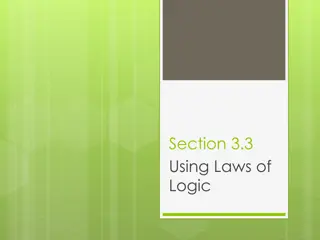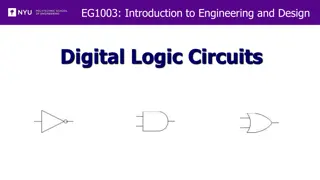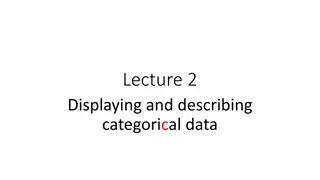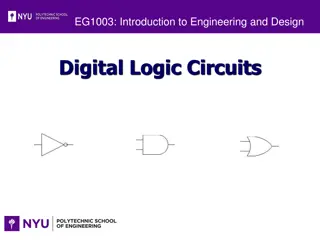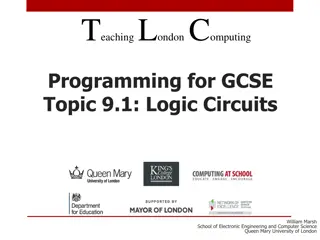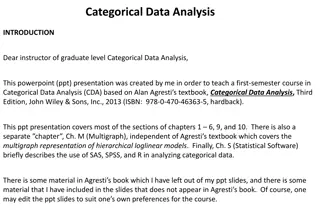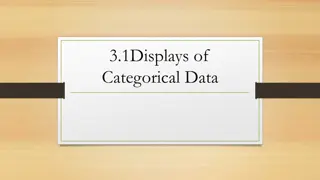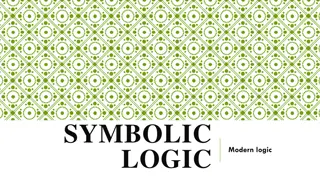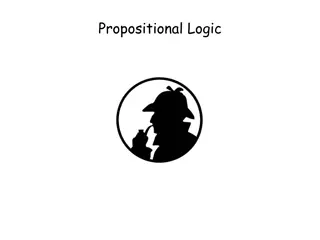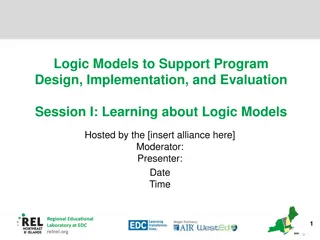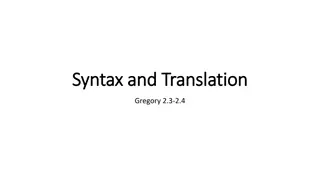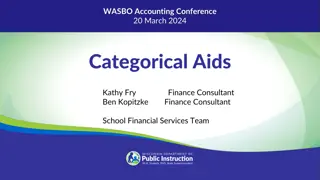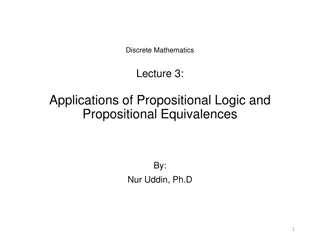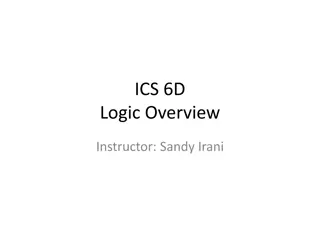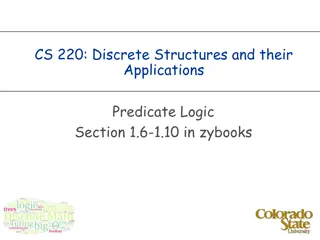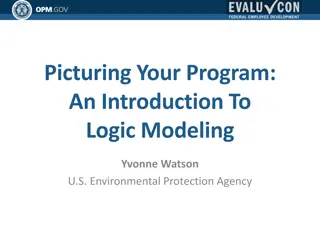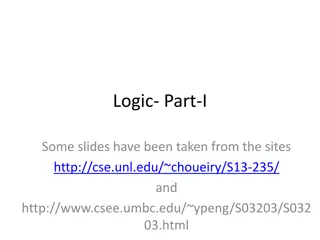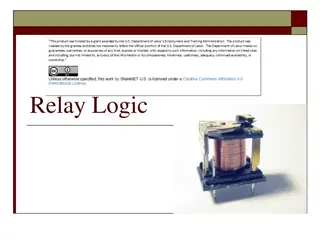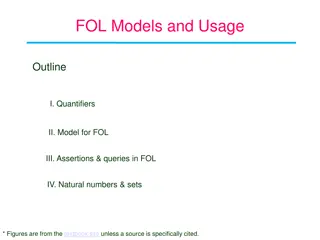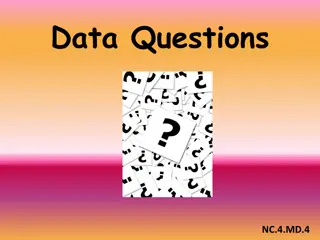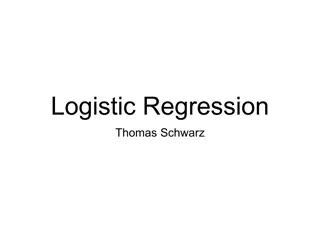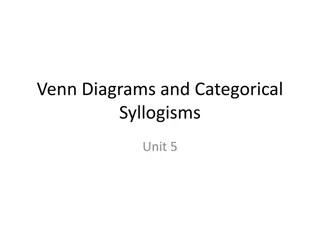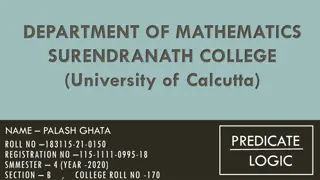Understanding Categorical Syllogism in Logic: A Comprehensive Overview
Categorical syllogism, a form of inference with two premises and a conclusion, is a fundamental concept in logic. This type of deductive argument consists of three categorical propositions - universal affirmative, universal negative, particular affirmative, and particular negative. Terms such as major, minor, and middle are essential in identifying the structure of a syllogism, along with the distribution of terms. Explore the classifications of propositions and their implications in logical reasoning.
Download Presentation

Please find below an Image/Link to download the presentation.
The content on the website is provided AS IS for your information and personal use only. It may not be sold, licensed, or shared on other websites without obtaining consent from the author. Download presentation by click this link. If you encounter any issues during the download, it is possible that the publisher has removed the file from their server.
E N D
Presentation Transcript
Categorical Syllogism B.A. Part- I Logic (philosophy) Ranjana Yadav Assistant Professor Department of Philosophy Magadh Mahila College Patna University Patna, Bihar 1
Syllogism is a form of inference with two premisses and a conclusion. The term syllogism refer to as the categorical syllogism. A categorical syllogism is a deductive argument and consists of three categorical propositions, two premisses followed by a conclusion. For example- Premiss- All practice is theory. Premiss- All surgery is practice. Conclusion- Therefore all surgery is theory . A categorical syllogism is said to be in standard form when its categorical propositions are arranged in a specified standard order. 2
Propositions : The propositions used in syllogism are classified into four different kinds. Universal Affirmative: (A) - Quality: Affirmative, Quantity: Universal All Greeks are humans. Universal Negative: (E) - Quality: Negative, Quantity: Universal No Greeks are humans. Particular Affirmative: ( I ) Quality: Affirmative, Quantity: Particular Some Greeks are humans. Particular Negative: (O) Quality: Negative, Quantity: Particular Some Greeks are not humans. Subject: Greeks , Predicate: Humans, Copula: are 3
Universal Affirmative -A All S is P. Universal Negative -E No S is P. Particular Negative - O Some S is not P. Particular Affirmative-I Some S is P. 4
Terms- Major, Minor, Middle The term occurring twice in the premisses is called the middle term. The terms which are subject and predicate of the conclusion are called the minor and the major term. For example: No heroes are cowards. (Major premiss) Some doctors are not cowards. (Minor premiss) Therefore, some doctors are heroes . Middle term: cowards Major term: heroes Minor term: doctors Terminology: The premiss containing the minor term is known as the minor premiss. The premiss contaning the major term is called major premiss. So to put the major premiss before the minor in setting out the syllogism. hu 5
Distribution of terms: Universal Affirmative A : All soldiers are heroes Predicate heroes Subject Soldiers Distributed Undistributed A proposition distributes a term if it refers to all members of the class designated by term. A- Universal Affirmative: Only subject is distributed. E- Universal Negative: Both subject and predicate are distributed. I - Particular Affirmative: Neither subject nor predicated are distributed. O- Particular Negative : Only predicated is distributed. 6
All S is P.(A) No S is P.(E) Both Subject & Predicate Only Subject Only Predicate No Subject & Predicate Some S is not P. (O) Some S is P. (I) Distribution of terms 7
Figure: There are four possible arrangements of our major, minor and middle terms. These four possible arrangements are known as the figures of syllogism. I II III IV M P P M M P P M S M S M M S M S S P S P S P S P ( M- Middle term, P- Major term, S- Minor term) 8
Mood : The mood of the syllogism is determined by the types of its three propositions ( A, E, I, O ). There are 64 possible different moods. for example : O- Some parrots are not pets. A- All parrots are birds. E- Therefore, no birds are pets. OAE is Mood of this syllogism. Valid moods : Figure I Figure II Figure III Figure IV AAA( Barbara) EAE( Cesare) AII(Darapti) AAI(Bramantip) EAE( Celarent) AEE(Camestres) IAI (Disamis) AEE ( Camenes) AII ( Darii) EIO( Festino) AII(Datisi) IAI( Dimaris) EIO( Ferio) AOO(Baroco) EAO(Felapton) EAO(Fesapo) OAO( Bocardo) EIO( Fresison) EIO (Ferison) Mood and Figure jointly determine categorical syllogism logical form. 9
Rules and fallacies which govern the validity and invalidity of the Categorical syllogisms: 1. Must contain exactly three terms, ( major, minor, middle) which is used in the same sense throughout the argument. Violation: Fallacy of four terms Example: Valid - All mammals are dogs. No cats are dogs. Therefore no cats are mammals. Mood - AEE Invalid - All dogs are cats. No birds are mammals. Mood -AEA Therefore all birds are dogs. ( Fallacy of four terms- dogs, cats, birds, mammals) 2. The middle term must be distributed at least once. Violation: Fallacy of the undistributed middle term. Example: Valid All artists are egotists. All artists are paupers Therefore all paupers are egotists. Mood -AAA 10
Invalid - All egotist are artists. Some artists are paupers Therefore all paupers are egotists. Mood - AIA ( Fallacy of the undistributed middle term.) 3. If either term (major / minor ) is distributed in the conclusion, then it must be distributed in the premisses. Violation: Fallacy of the illicit major/ illicit minor term. Example: Valid- All mammals are dogs. No cats are dogs. Therefore no cats are mammals. Mood -AEE Invalid - All dogs are mammals. No cats are dogs. Therefore no cats are mammals. Mood -AEE (Fallacy of the illicit major term.) 11
4.. No conclusion follow from two negative premisses. Violation: fallacy of exclusive premisses. Example: Invalid No poets are scientists. Some scientists are not artists. Mood -EOO Therefore some artists are not poets. 5. If one premiss is negative, the conclusion must be negative. Violation: Fallacy of drawing an affirmative conclusion from negative premiss. Example: Invalid- No poets are scientists. Some scientists are artists. Mood -EII Therefore some artists are poets. 6. A particular conclusion can not have a two universal premisses. 12
Example: Invalid- No poets are scientists. All scientists are artists. Mood -EAI Therefore some artists are poets. Venn Diagram technique for testing the validity of syllogism: 13
Predicate Subject middle MOOD AAA, FIGURE-I All M is P. All S is M. Valid Therefore All S is P. 14
Reference: Copi ,Irving M. and Cohen, Carl., Introduction to Logic , 9th ed. (New Delhi: Prentic Hall of india, 2001), 244-266. Basson, A.H. and O Connor, D. J., Introduction to Symbolic Logic ( New Delhi: Oxford University Press, 1956), 143-148. 15
THANK YOU 16





